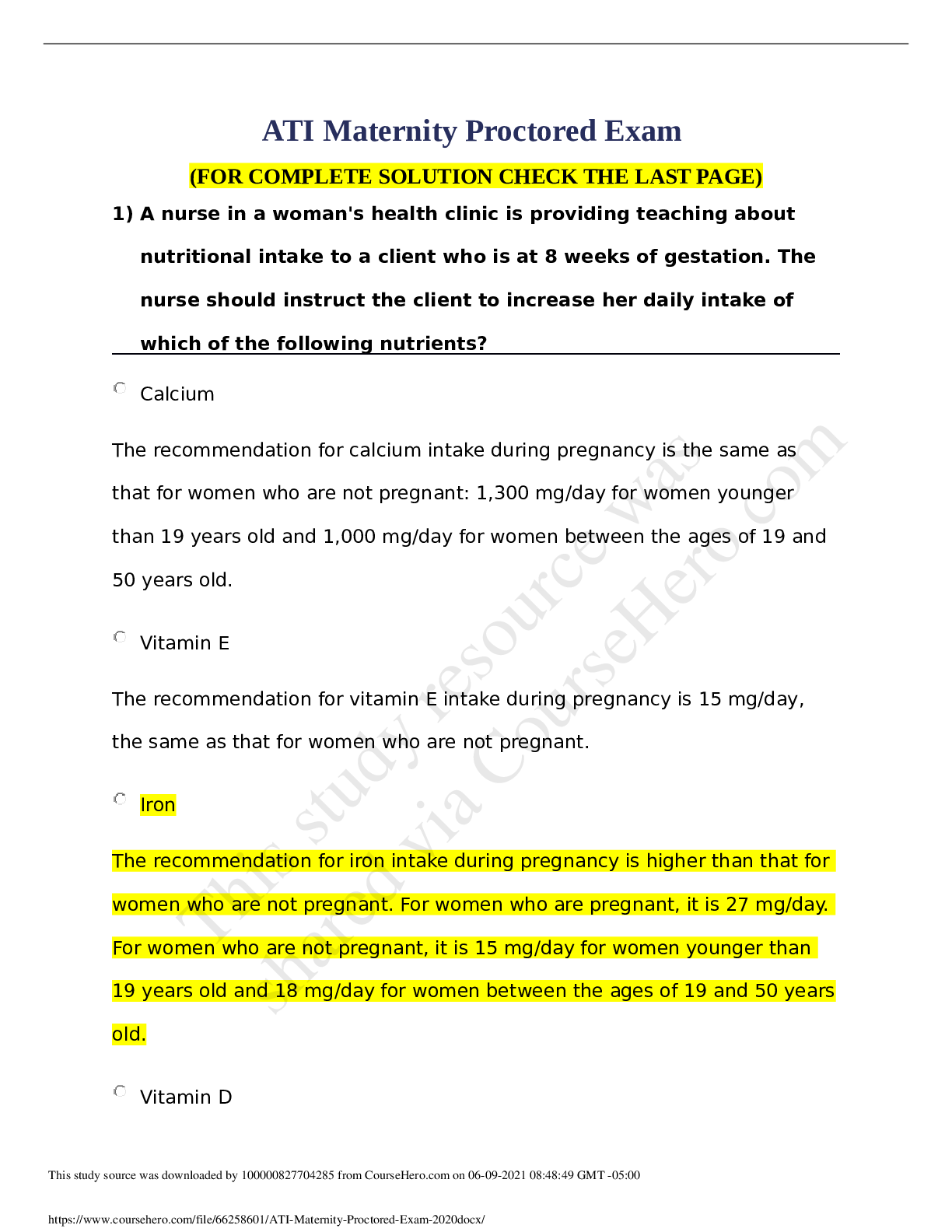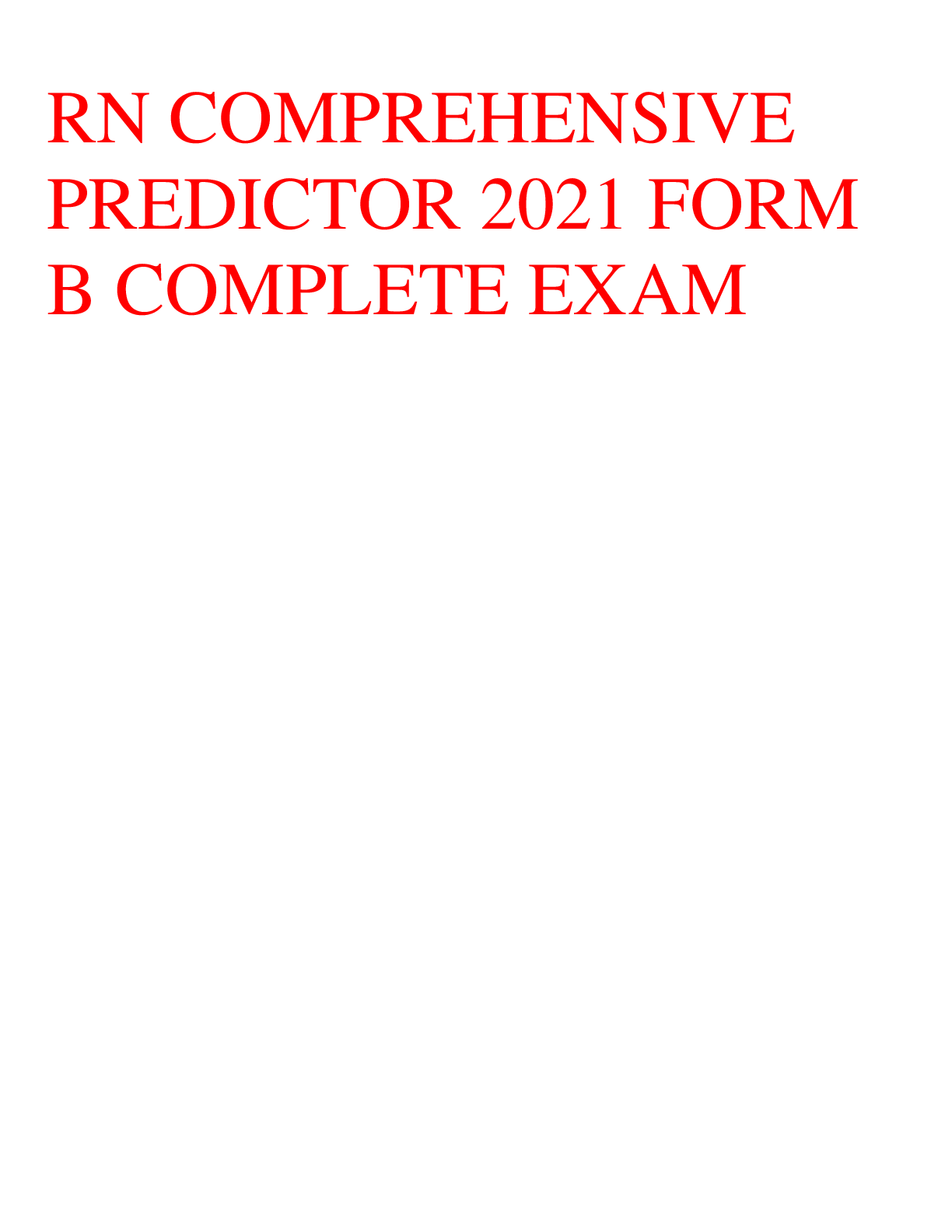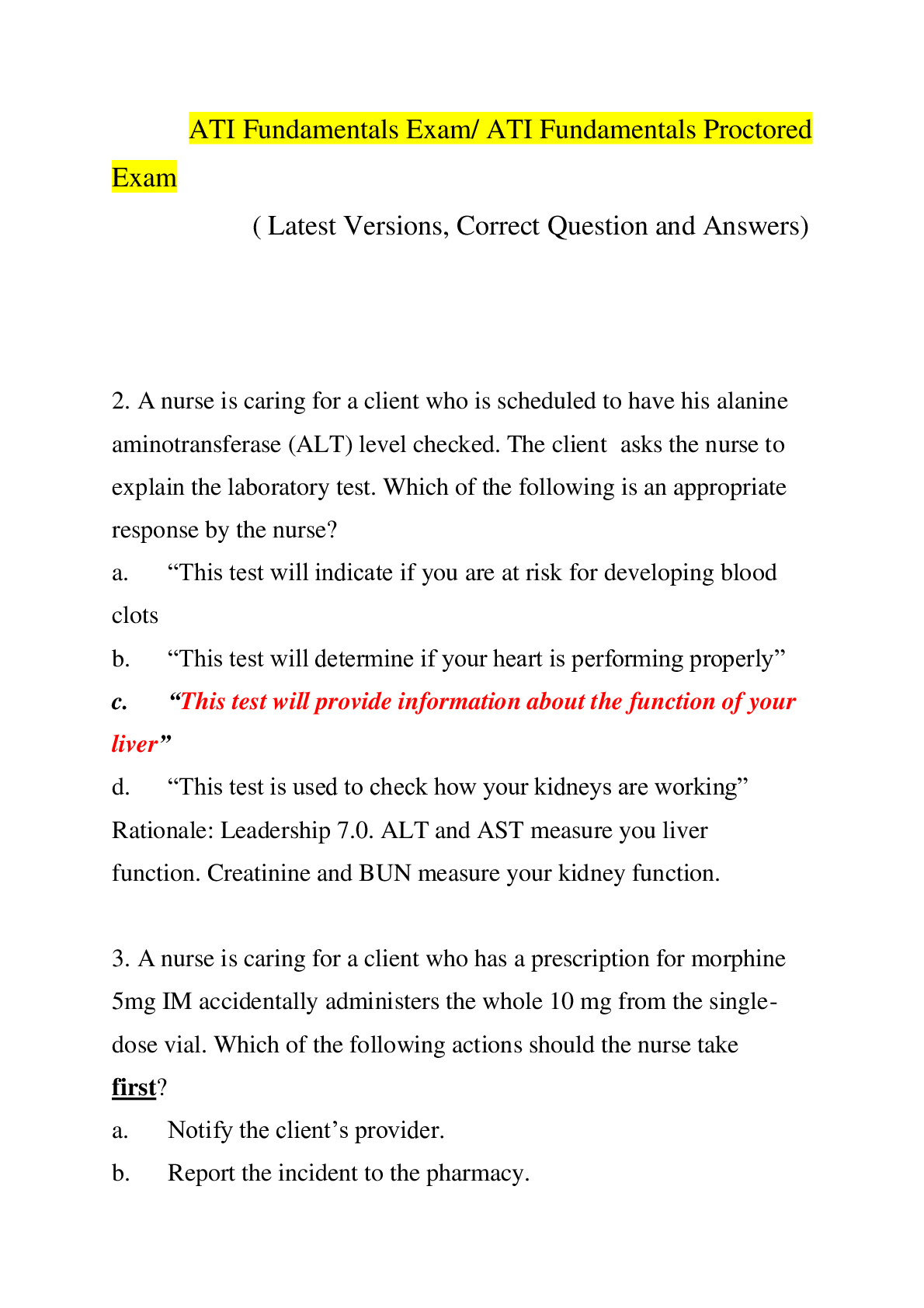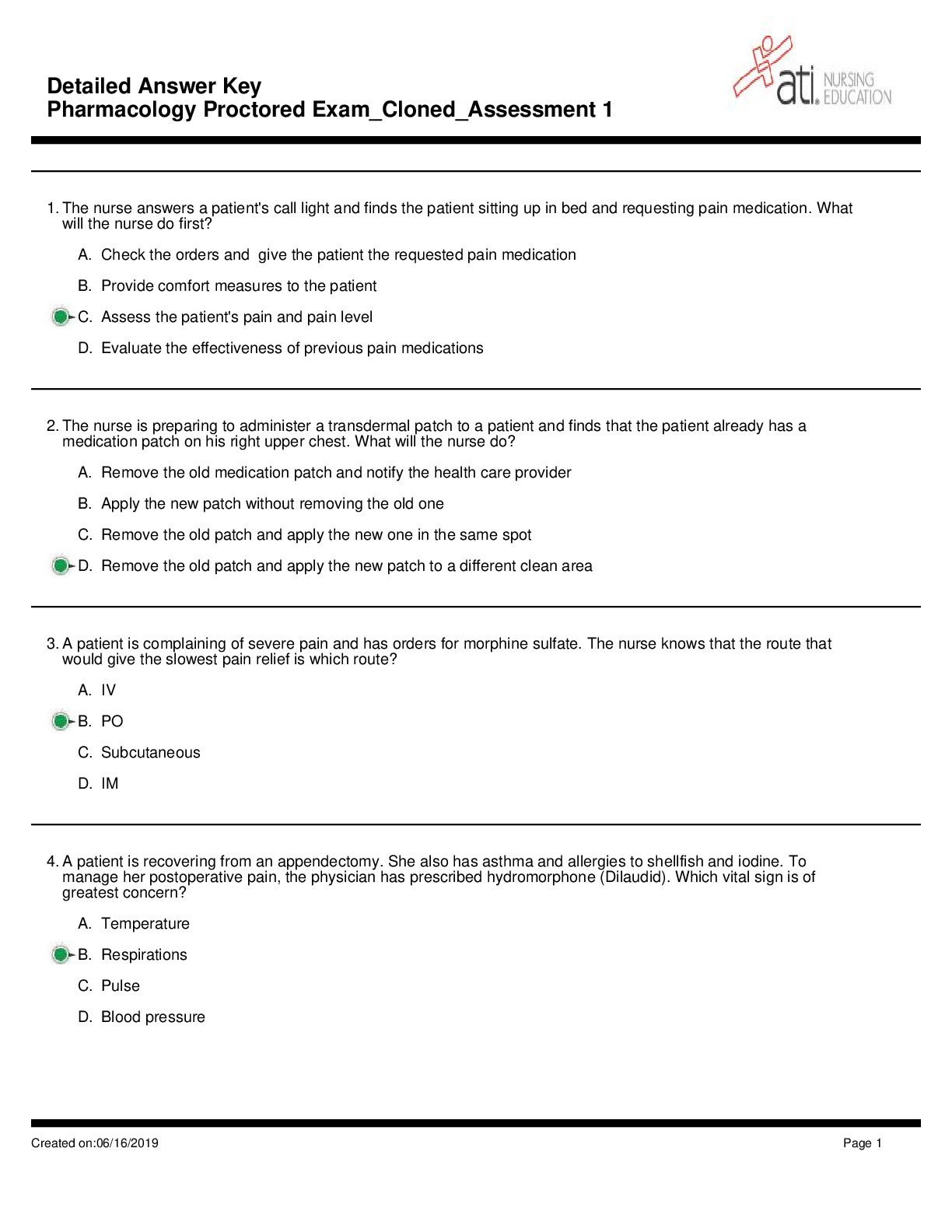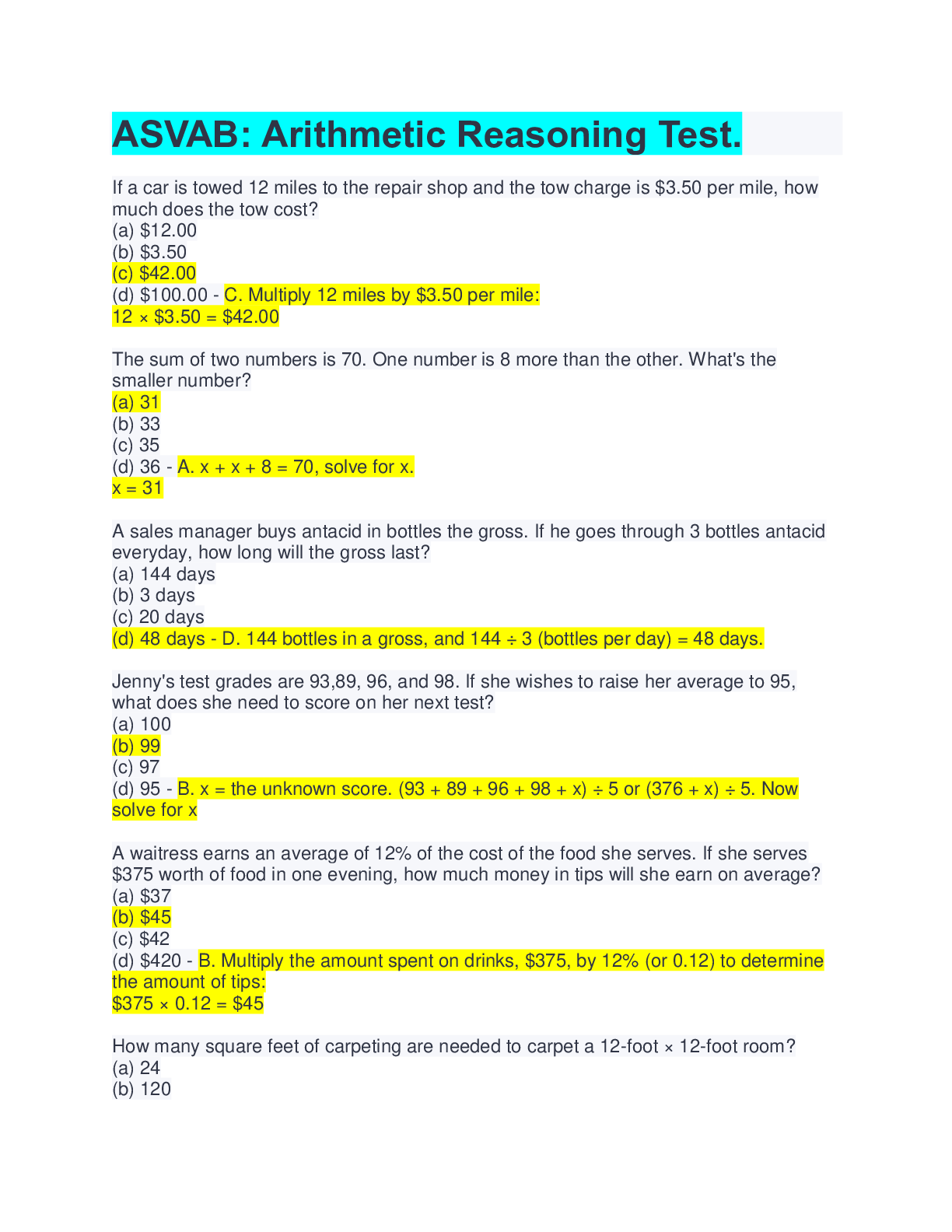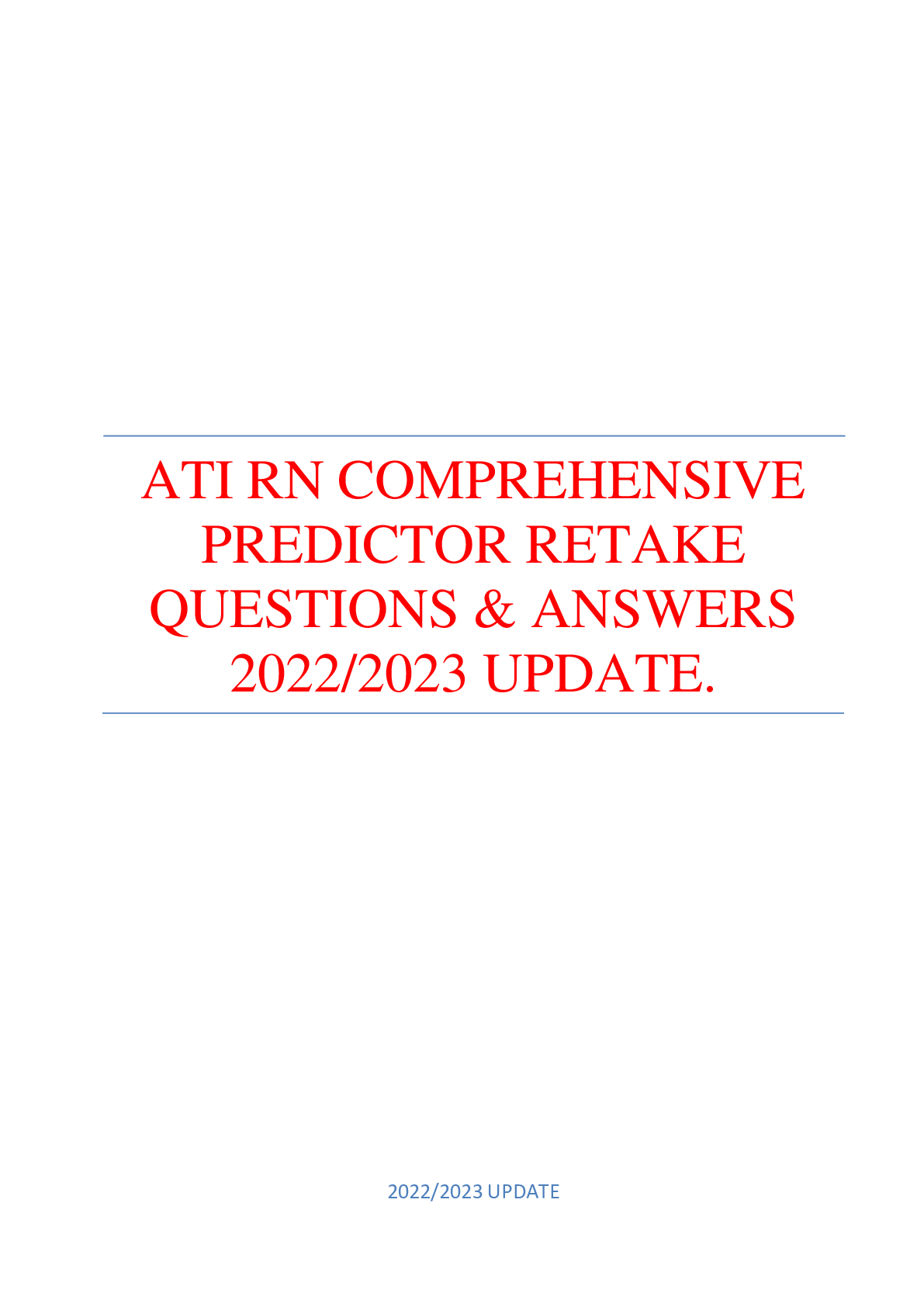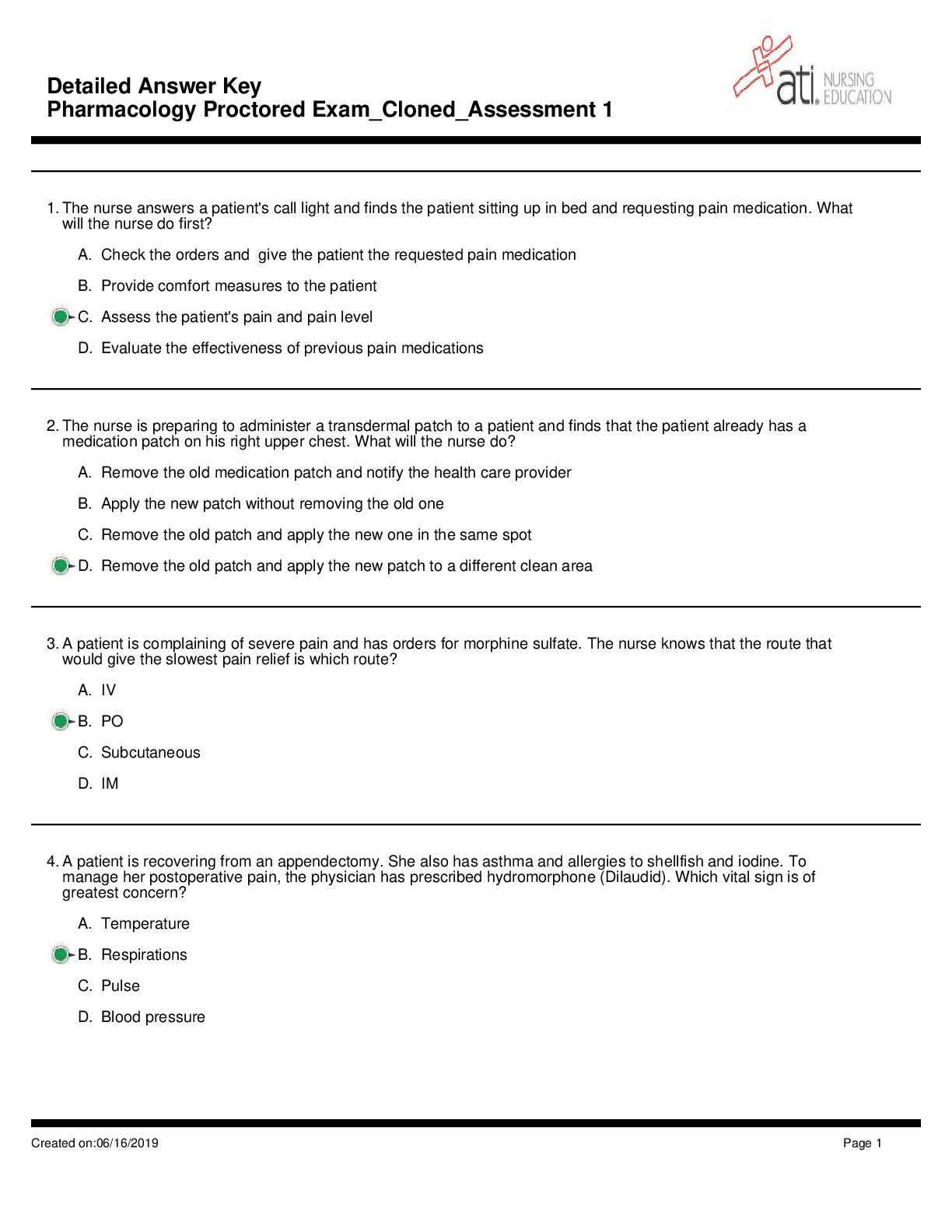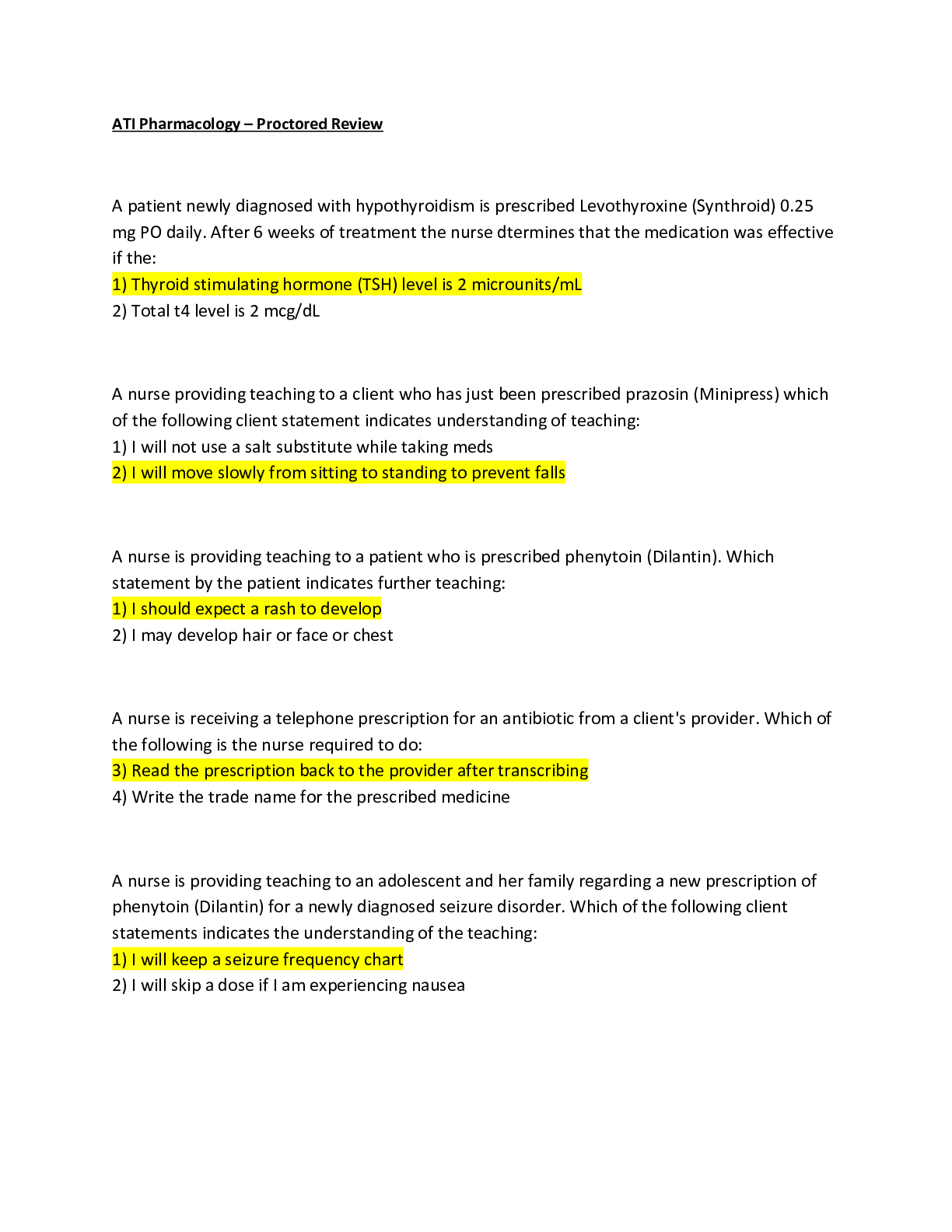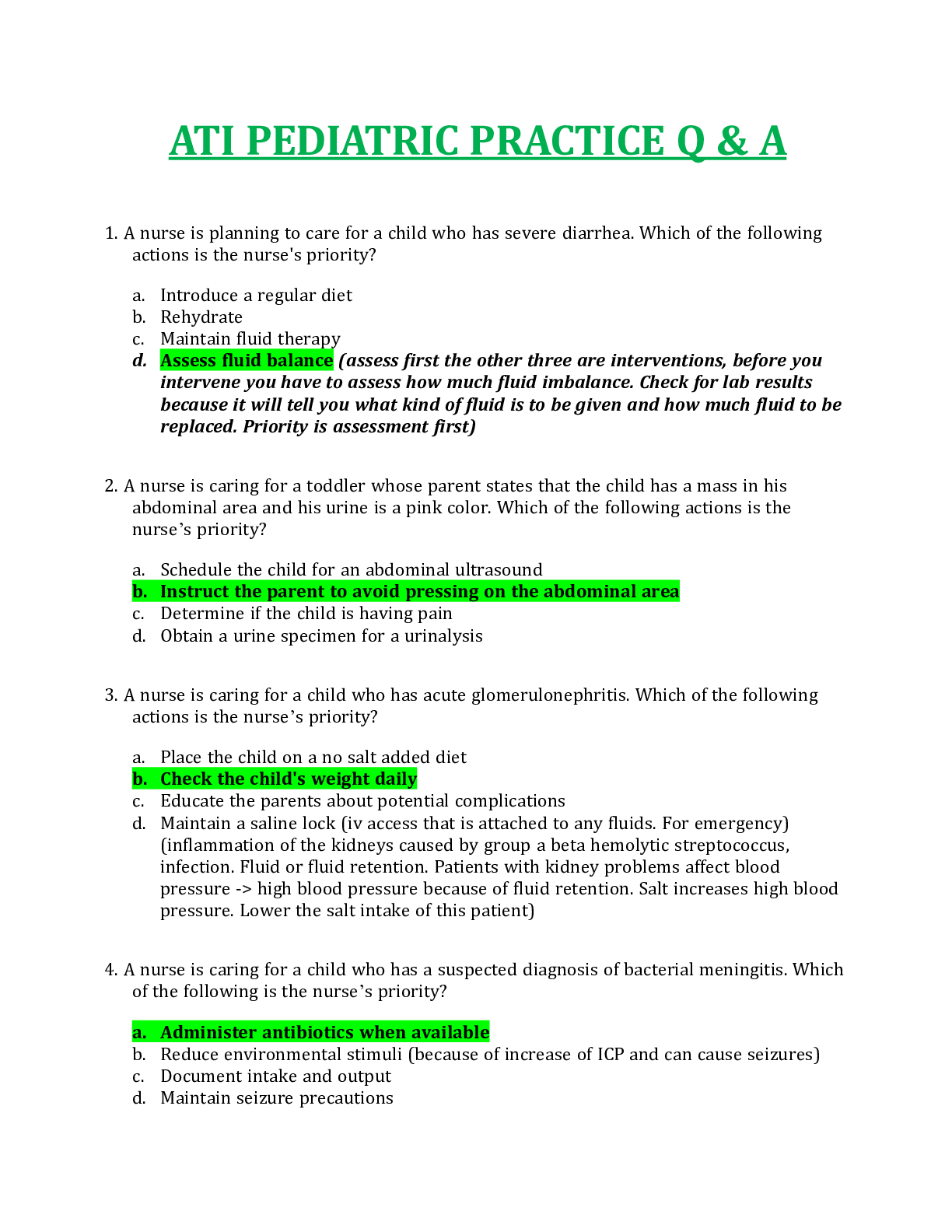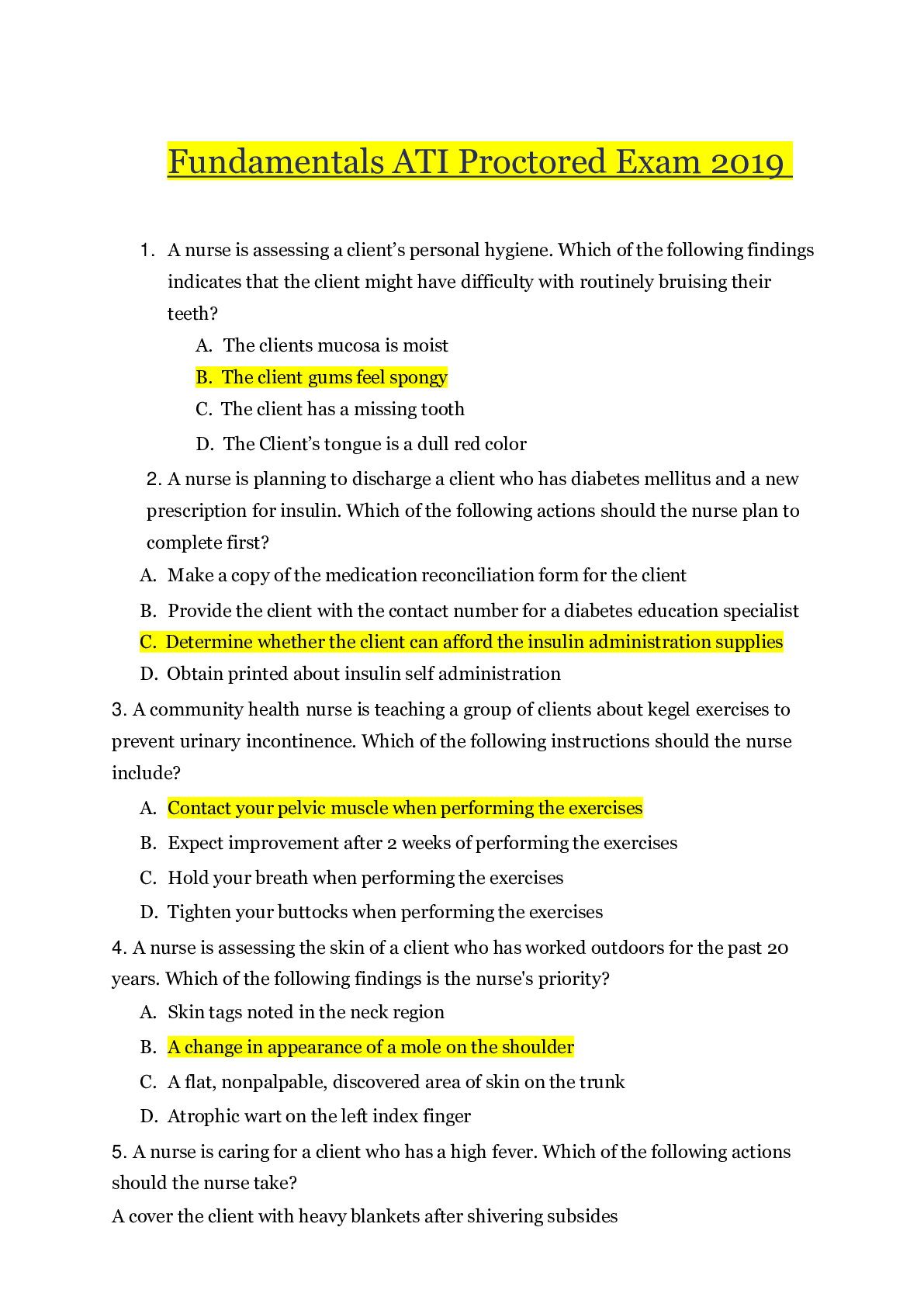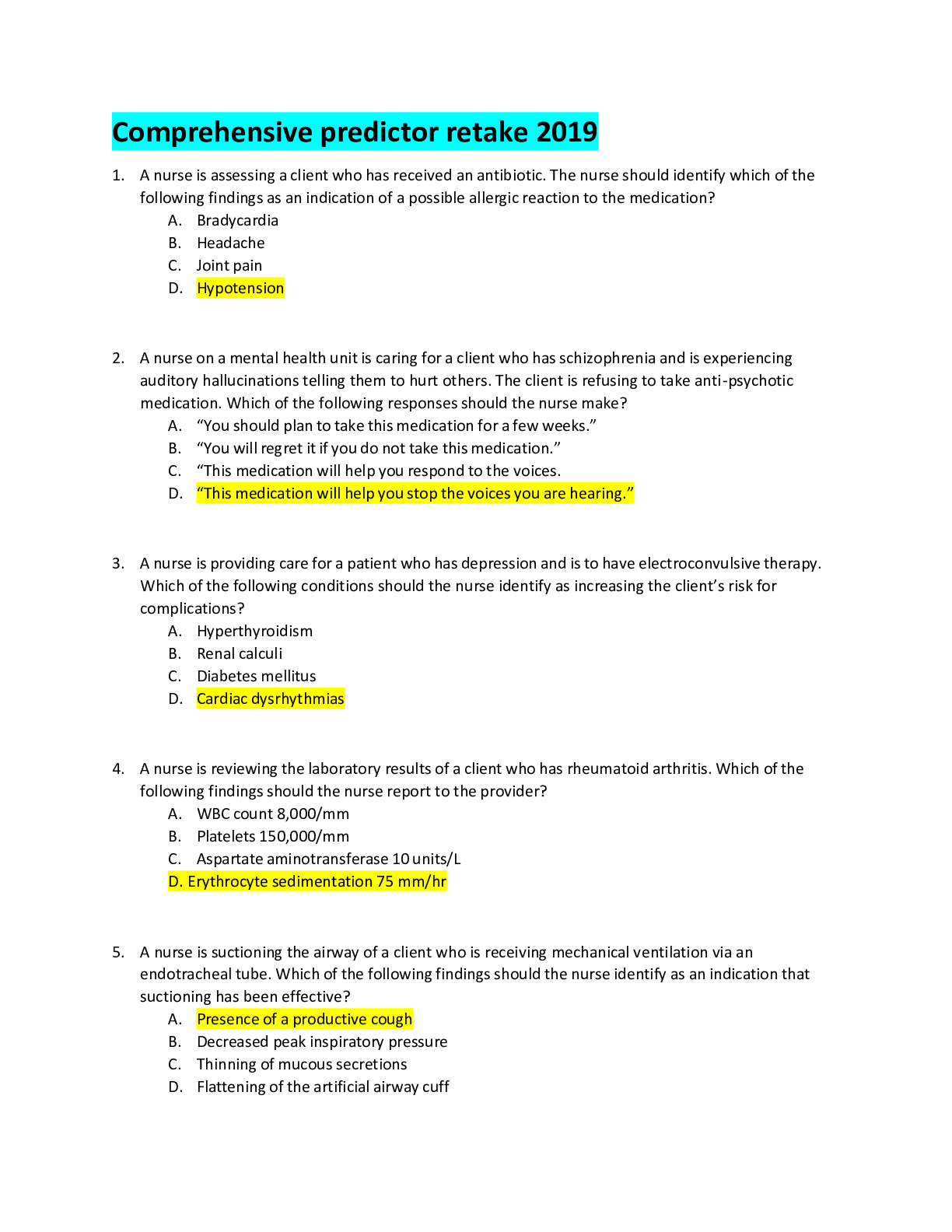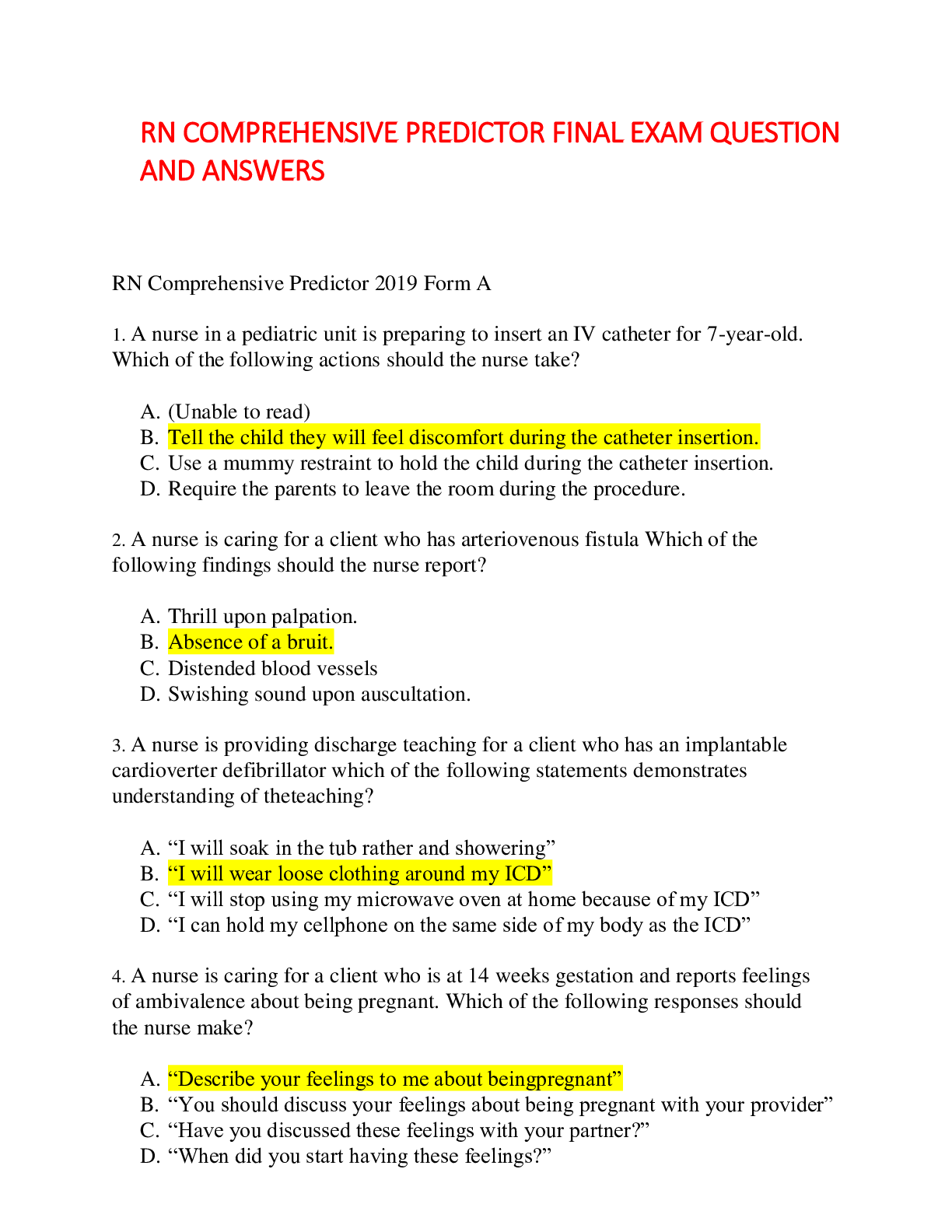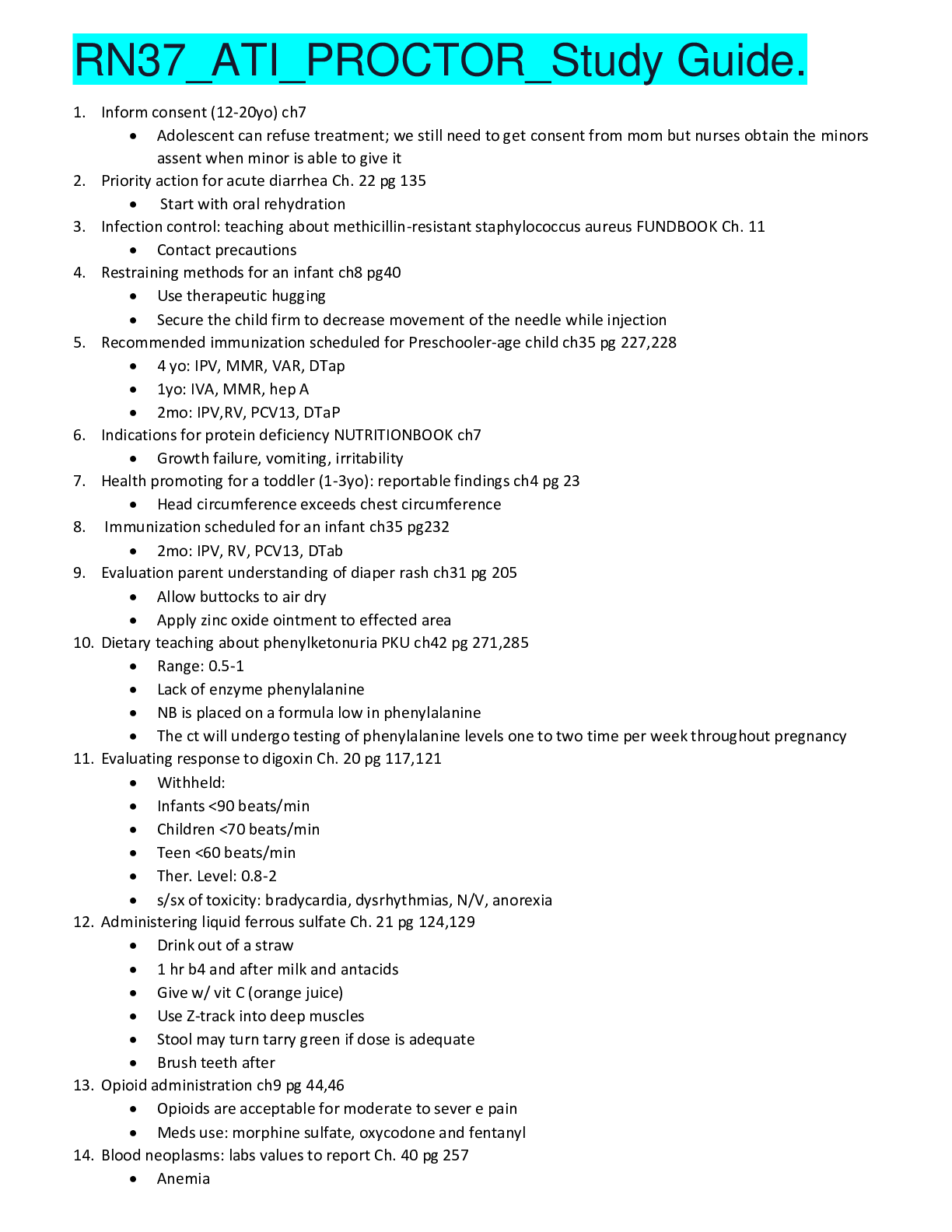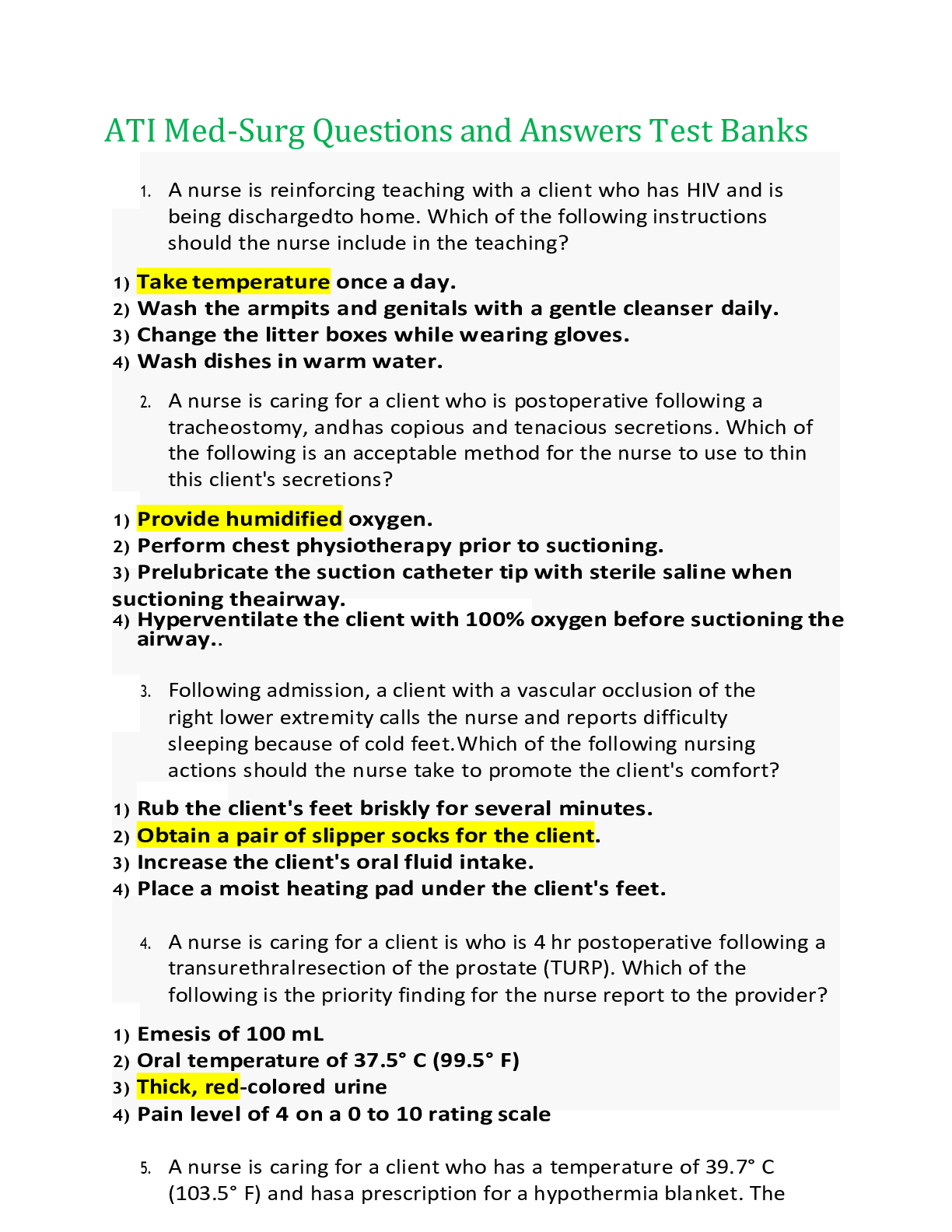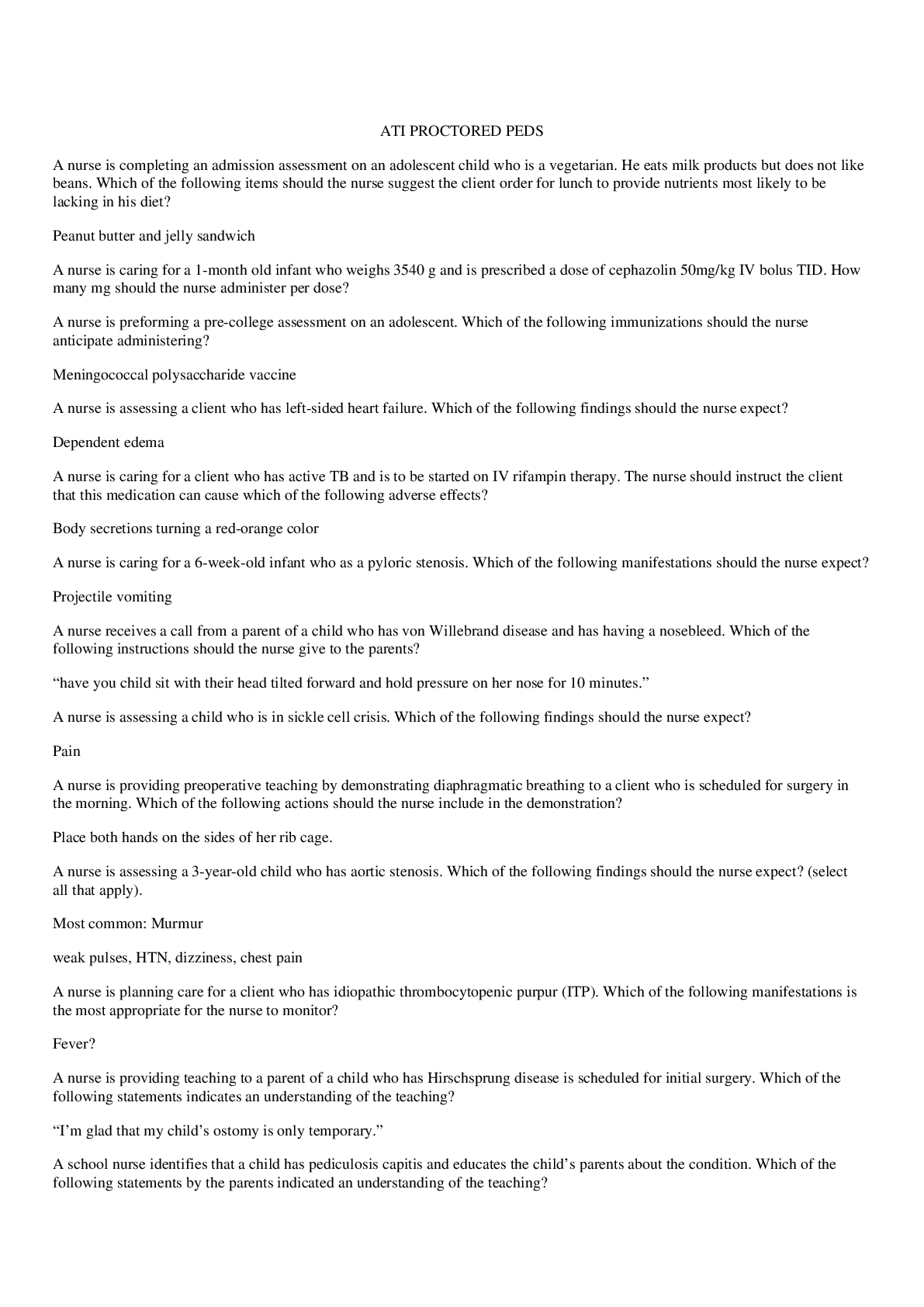*NURSING > EXAM PROCTORED > MENTAL HEALTH ATI PROCTORED*questions with correct answers* (All)
MENTAL HEALTH ATI PROCTORED*questions with correct answers*
Document Content and Description Below
MENTAL HEALTH ATI PROCTORED A client who has anorexia nervosa is more likely to have resulting from extreme malnutrition. A client who has bulimia nervosa is likely to have caused by frequent e... xposure to gastric acid from vomiting. Extreme distractibility is a hallmark manifestation of . Criteria for hospitalization is weight loss over 30% of total body weight in months. Severe hypothermia, a temperature lower than due to loss of subcutaneous tissue or dehydration, requires hospitalization. Fine hand tremors are an expected adverse effect of and can interfere with the client's ADLs, causing the client to stop taking the medication. The nurse should encourage the client to drink of fluid each waking hour to maintain hydration. An initial response to amitriptyline can develop in 1 week. For a client who has been severely depressed with suicidal ideation, the energy to carry out a plan is . Clients who are taking tranylcypromine, an MAOI antidepressant, should not take and other over-the-counter medications for sinus congestion, colds, or allergies due to their actions on the sympathetic nervous system, which can result in severe hypertension, The nurse should identify that mild cognitive impairment, such as frequently misplacing objects, is one of the first manifestations expected to occur for a client who has . A client who is experiencing is expected to have hypertension, tachycardia, and a fever greater than 38.3° C (101° F). A client who is experiencing alcohol withdrawal can experience profuse sweating and pupils Benztropine is used to treat parkinsonism manifestations, such as . St. John's wort is an herbal preparation that decreases the reuptake of serotonin. The nurse should advise the client that taking St. John's wort with another medication that also inhibits the reuptake of serotonin, such as , places the client at risk for is common in clients who have depression. The nurse should allow the client time to comprehend and formulate an answer to the question. The greatest risk to the client who is experiencing alcohol withdrawal is seizures, an elevated heart rate, and elevated blood pressure. acts rapidly to prevent seizures, stabilize vital signs, and decrease the intensity of withdrawal manifestations It is the responsibility to confrontthe staff member about her behavior toward the client. Clients who have can disrupt the therapeutic milieu for other clients. Therefore, the nurse should move this client to aprivate room. The nurse should documentthe client's behavior every while the client is in seclusion. The nurse should assess the client's behavior frequently during seclusion and shouldrenew the prescription for seclusion for an adult client every , for a maximum of 24 hr. Normal levels of sodiumand fluid need to be maintained to ensure adequate excretion of . The nurse should monitor the child for , which is an adverse effect of methylphenidate. A traumatic event that causes severe stress is a trigger for . Clients who have need excessive input from others to make everyday decisions. The nurse should teach the client that he is notresponsible for his disorder, but he is responsible for his . Envisioning oneself in a peaceful, calm environment enhances relaxation and is an example of using . The rapid transition from one emotion to another and is a primary feature of borderline personality disorder. Clients who have borderline personality disorder react to situations with emotional responses that are out of proportion to the circumstances. The greatest risk to the child who has ADHD is injury from impulsive behavior and the decreased ability to perceive self-harm. Therefore, the priority intervention is to . The seizure induced during ECT can stress the client's heart. Therefore, the nurse should plan to monitor the client's during ECTvia an electrocardiogram. The nurse should frequentlyoffer the client, high-calorie foods that can be eaten while the client is on the go. Clients experiencing might be unable to sit down for meals and can experience weight loss and dehydration. A sodium level of 128 mEq/Lshould alert the nurse that the client is at risk for because renal excretion of lithium is decreased in the presence of a low sodium level. ..............................................................continued,................................................................................ [Show More]
Last updated: 1 year ago
Preview 1 out of 20 pages
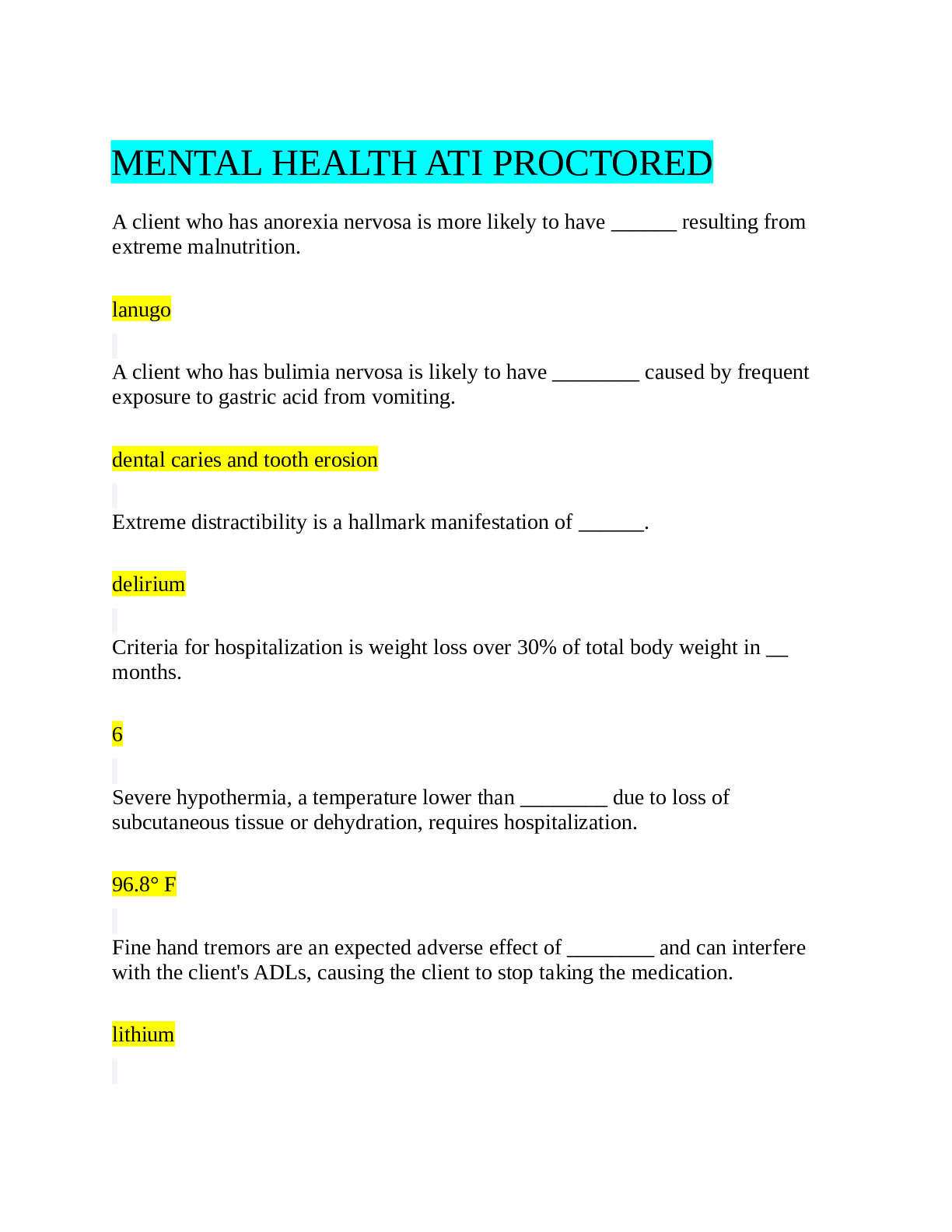
Reviews( 0 )
Document information
Connected school, study & course
About the document
Uploaded On
May 12, 2021
Number of pages
20
Written in
Additional information
This document has been written for:
Uploaded
May 12, 2021
Downloads
0
Views
38

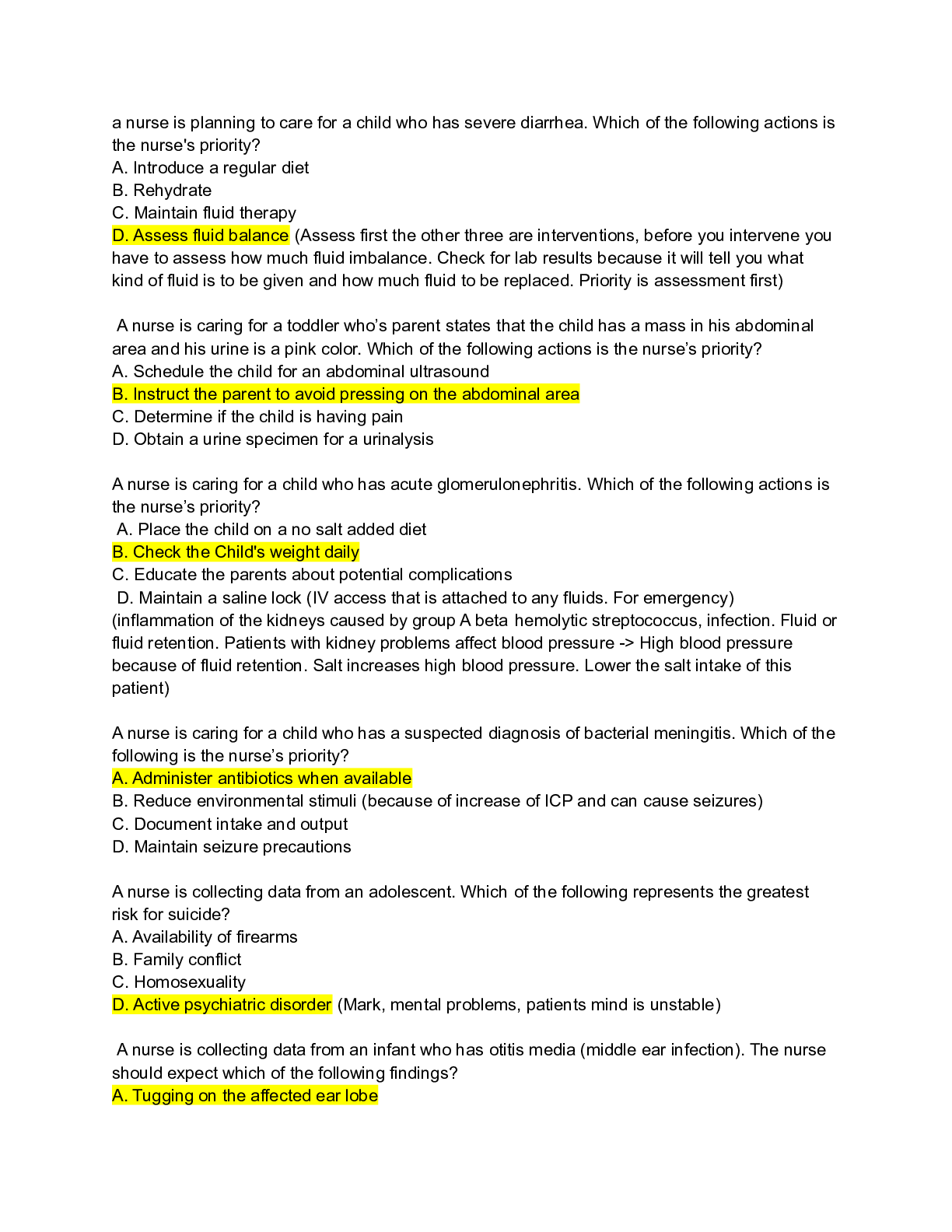
.png)

